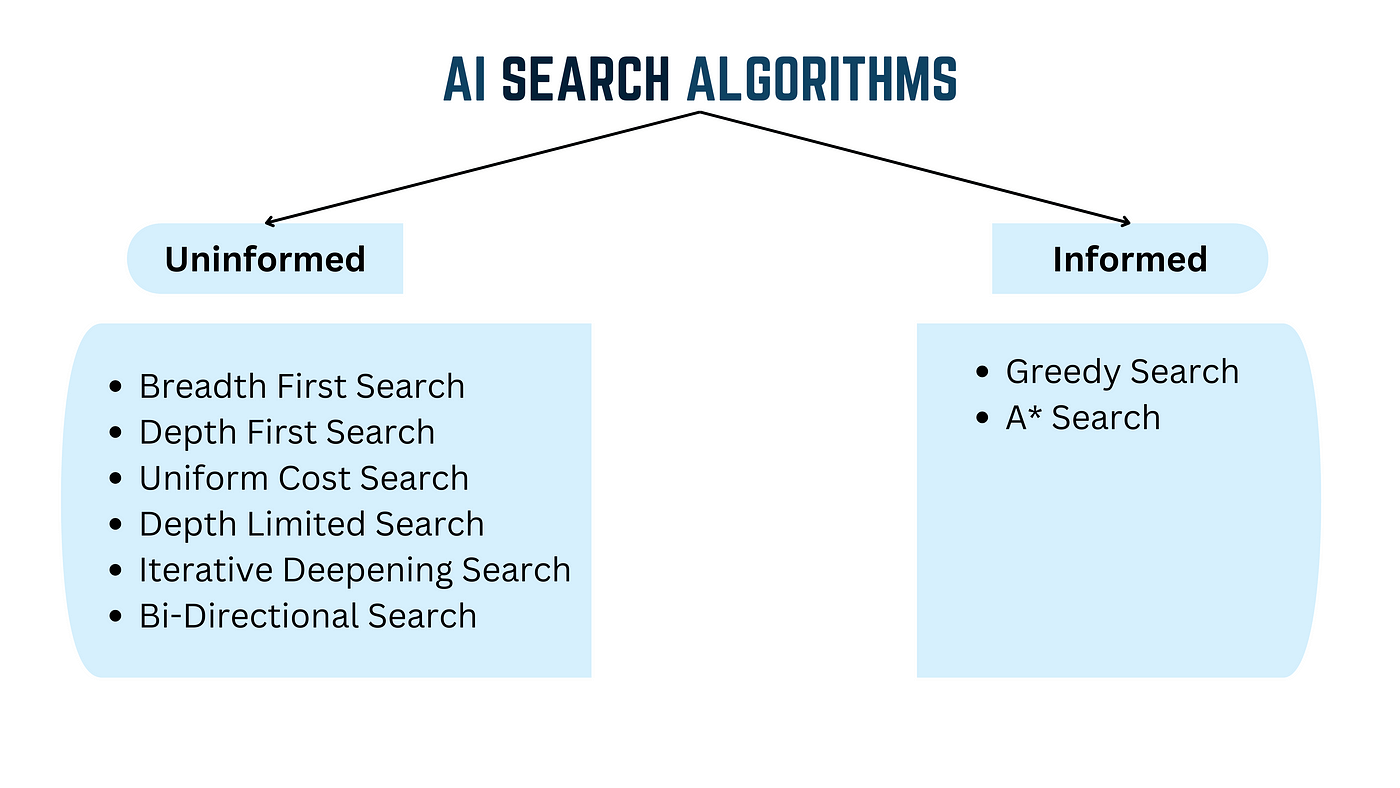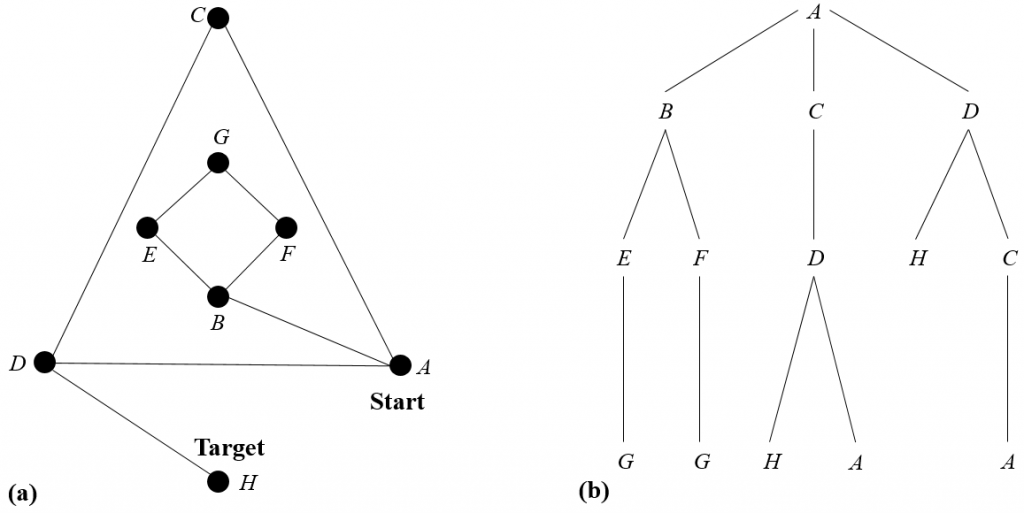
- Introduction to State Space Search
- What is a State Space?
- Components of State Space Search
- Types of State Space Search Algorithms
- Breadth-First Search (BFS) and Depth-First Search (DFS)
- Heuristic Search and A Algorithm*
- Applications of State Space Search in AI
- Challenges and Future of State Space Search
- Conclusion
Introduction to State Space Search
State space search is one of the core concepts in Artificial Intelligence (AI), serving as the foundation for many AI algorithms and applications. From pathfinding algorithms to game-playing strategies, state space search is an essential tool for problem-solving. This blog will deeply dive into state space search, explain its underlying concepts, and explore its application in AI systems. Whether you’re a beginner or looking to refresh your knowledge, this post will provide an in-depth look at this crucial aspect of AI. State space search refers to solving a problem by exploring a set of possible configurations (or states). These configurations can represent all the possible states achieved from an initial state by applying a series of actions. State space search, commonly used in Data Science Training, is employed to find solutions to problems by exploring possible states in a structured manner. In the context of AI, state space search formalizes the problem-solving process. For example, in a puzzle-solving game, each configuration of pieces can be a “state,” the goal is to find a path through these states from the initial configuration to the goal configuration. State space search techniques can be applied to problems ranging from route planning, chess game playing, and automated theorem proving to decision-making in robotics.
Eager to Acquire Your Data Science Certification? View The Data Science Course Offered By ACTE Right Now!
What is a State Space?
A state space is a conceptual framework comprising all the possible states that can be reached in a problem domain. Each state represents a specific problem configuration, and actions or moves define the transitions between states. To illustrate this, let’s consider the well-known 8-puzzle problem, where the task is to rearrange tiles on a 3×3 grid to reach a specific goal state.
- State: A particular arrangement of tiles.
- Action: Moving a tile from one position to another.
- Initial state: The starting arrangement of tiles.
- Goal state: The target arrangement of tiles.
In this example, the state space in Data Science consists of all possible configurations of the tiles, and the search process involves exploring the states through legal moves until the goal state is found. The size of the state space is a critical factor in the efficiency of the search process, as it determines how many states must be explored.
Components of State Space Search
State space search involves several key components:
- Initial State: The starting point of the search, representing the initial configuration of the problem.
- Actions: The possible operations or moves that can be performed to transition from one state to another.
- State Space: The entire set of possible states that can be reached from the initial state by applying actions.
- Goal State(s): The desired end state(s) the search aims to reach.
- Path: A sequence of states connected by actions that lead from the initial state to the goal state.
In state space search, the goal is to find a path from the initial state to the goal state, possibly optimizing the solution based on various criteria, such as minimizing the number of steps or costs. The Functions of Statistics such as data collection, analysis, interpretation, and presentation—can support this process by providing insights into search performance, evaluating heuristic effectiveness, and guiding decision-making under uncertainty.

Types of State Space Search Algorithms
Several types of state space search algorithms are used in AI, each with its strengths and weaknesses. These algorithms can be broadly classified into two categories:
- Advantages: Guarantees the shortest path in an unweighted problem.
- Disadvantages: It can be memory-intensive, especially in large state spaces.
- Advantages: Less memory usage than BFS.
- Disadvantages: They may get stuck in deep branches of the state space and fail to find the shortest path.
- g(n)g(n)g(n) represents the cost to reach the current state from the start state.
- h(n)h(n)h(n) represents the heuristic estimate of the cost to reach the goal from state and.
- By balancing the actual cost and the heuristic estimate, A* can efficiently explore the most promising paths, making it ideal for applications such as route planning (e.g., GPS navigation systems).
- Advantages: Guarantees the optimal path when using an admissible heuristic.
- Disadvantages: It can still be memory-intensive for large state spaces.
- Computational Complexity: For significant problems, the state space can be enormous, making it infeasible to explore all possible states. This is especially true for combinatorial problems.
- Memory Usage: Algorithms like BFS and A* can consume large amounts of memory, mainly when the state space is vast.
- Heuristic Design: In heuristic search, the quality of the heuristic function significantly impacts the algorithm’s performance. Poor heuristics can lead to suboptimal search and high computational costs.
Uninformed Search (Blind Search):
These algorithms explore the state space without knowing which states are closer to the goal. They rely solely on the state space’s structure.
Informed Search (Heuristic Search):
These algorithms use additional information (heuristics) to guide the search process, aiming first to explore the most promising paths.
Excited to Obtaining Your Data Science Certificate? View The Data Science Training Offered By ACTE Right Now!
Breadth-First Search (BFS) and Depth-First Search (DFS)
Breadth-First Search (BFS)
BFS explores the state space level by level, expanding all the states at a given depth before moving on to the next level. It guarantees that the first solution found will be the shortest, as it explores all possibilities at the current depth before moving deeper.
Depth-First Search (DFS)
In the Basics of Data Science, understanding search algorithms like DFS is crucial. DFS explores a state space by going as deep as possible along one branch before backtracking. While it may not find the shortest path, it uses less memory than BFS because it doesn’t need to store all the states at the current depth.
BFS and DFS are fundamental algorithms, but they have limitations that make them unsuitable for large-scale or complex problems without further optimization.
Interested in Pursuing Data Science Master’s Program? Enroll For Data Science Master Course Today!
Heuristic Search and A Algorithm*
While BFS and DFS are simple, they often lack efficiency for many AI applications. In Data science Training, heuristic search algorithms—like the A* algorithm—are emphasized for their ability to use more problem-specific knowledge (heuristics) to guide the search process effectively. The A algorithm* is one of AI’s most widely used informed search algorithms. It combines the advantages of greedy best-first search (which selects the most promising states) and Dijkstra’s algorithm (which guarantees finding the shortest path). A* works by maintaining a cost function, typically represented as: f(n)=g(n)+h(n)f(n) = g(n) + h(n)f(n)=g(n)+h(n)

Applications of State Space Search in AI
State space search plays a vital role in a wide range of AI applications. In game playing, AI agents in games like chess, Go, or tic-tac-toe use state space search to evaluate possible moves and strategies. A notable example is AlphaGo, which combined deep neural networks with Monte Carlo tree search—a variant of state space search—to achieve superhuman performance in the game of Go. In robot navigation, state space search helps robots plan paths through complex environments, enabling them to avoid obstacles and reach designated goals efficiently—a concept often explored in Data Science Training to illustrate practical applications of search algorithms. Puzzle solving also relies heavily on these techniques, with classic challenges like the 8-puzzle and Rubik’s Cube being tackled through systematic exploration of possible states. Additionally, automated theorem proving in mathematical logic benefits from state space search by exploring potential proof paths. Finally, in the realm of planning, AI systems utilize state space search to generate sequences of actions aimed at achieving specific objectives, particularly in areas such as industrial automation and autonomous vehicles.
Preparing for a Data Science Job Interview? Check Out Our Blog on Data Science Interview Questions & Answer
Challenges and Future of State Space Search
Conclusion
State space search is a cornerstone of AI, enabling intelligent systems to explore and solve complex problems. Whether using simple algorithms like BFS and DFS or advanced heuristics like A*state space search provides a robust framework for problem-solving across various domains, from game playing to robotics. As AI grows and tackles more challenging real-world problems, understanding and improving state space search algorithms will remain crucial. With ongoing advancements in AI research, we can expect to see even more efficient and scalable search algorithms driving the next generation of AI applications.


